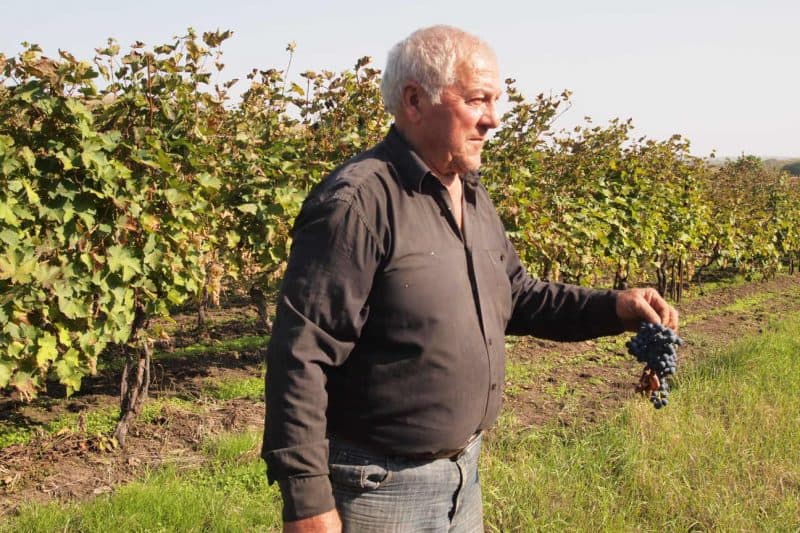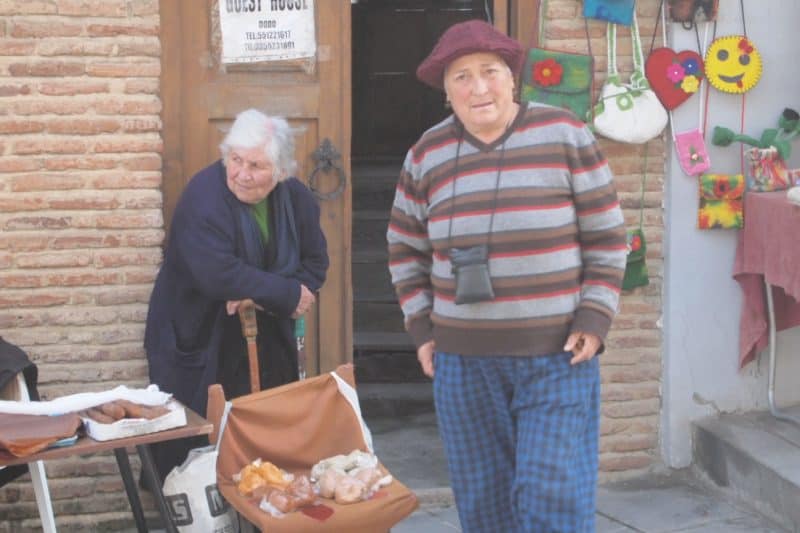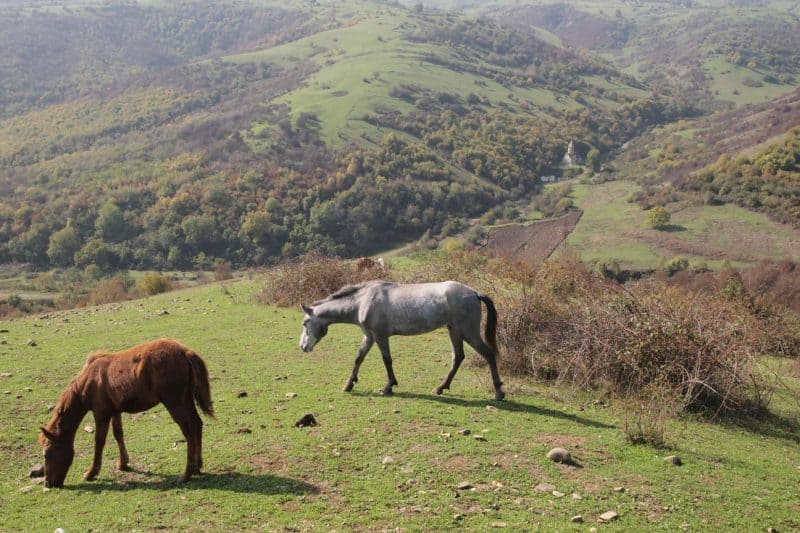A Crossroads of the Caucasus, Georgia Was a Tempting Invasion Target for Centuries

We woke up in Sighnaghi and outside men were playing backgammon while a small dog sat majestically atop a stone step in the town square. Young men sat outside our hotel strumming on a four-stringed small guitar. I asked them if they could play any Rolling Stones, Dylan or Led Zeppelin and they laughed that this was not that kind of guitar.

We walked up to the top of the hill on the cobblestones that had been put in to make the town appeal to tourists, and looked down at the orange roofs which were also replaced for the same reason. Tamar, our bright young guide, took out a large map of Georgia and spread it out before us. First she stepped on the part of the map to the north, Russia.
“I step on this because they’re Russian, well you know, not my favorite.” The long, long history of Georgia is full of invasions and betrayals. There have been 20 in all, and the last one was a repeat–the Soviet occupation from 1921 until 1991. Tamar pointed out the restive independent regions of Abkhazia and South Ossetia, which were once a part of Georgia but were declared independent by the Soviets. Today, she said, more than 350,000 people are considered displaced or missing who once lived there.

Located in such a crucial place, below Russia in the area of the Silk Road trading route, it seems like everyone–the Persians, the Ottoman Turks, Arabs and the Russians were always invading or snipping away territory, like we saw this year in Ukraine with Crimea. But as Tamar noted when we visited a 9th century church, no matter how many times Georgia was invaded by Muslims or atheist Soviets, they refused to ever convert their religion or give up Christianity.
Our stops today included a vineyard where grizzled men sat in front of a barbecue turning meat on a spit. They offered us grapes straight from the vines, which were just being harvested. Some of us bought souvenirs of little men with Tartar hats that fit atop bottles, another bought a carpet at a flea market, and someone found a 1938 world atlas with a picture of a smiling Stalin snuggling up with a child. He probably murdered the kid and his family right after they drew it, I thought.

Rolling green hills, steep areas of grassland for grazing horses and cattle, and dramatic clay cliffs were visible in the far distance outside of Sighnaghi as we toured some land that Max Johnson, one of our hosts bought in hopes of building guest houses. The view is remarkable and he was happy to report that after 120 meters, the well they dug bubbled up water. Getting to Georgia takes 24 hours or more, due to the flights, which don’t line up easily with flights to the US.
Despite logistical challenges, Max Johnson is confident that there is a great future for tourism here in Georgia. He’s had a great run as the head of a Canadian travel company, and now tours the world in search of fantastic destinations. He’s come back to Georgia a dozen times, so I think this might be one of his favorites.
